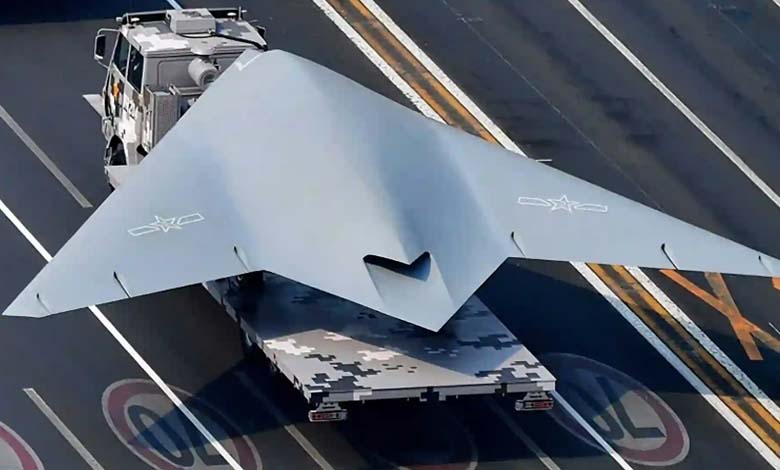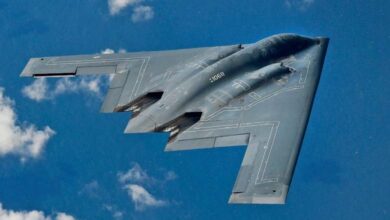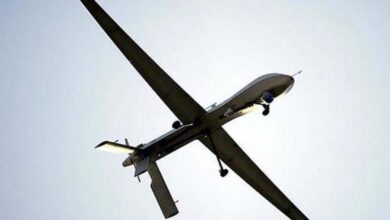Sharp Sword: China makes history with the first unmanned stealth fighter squadron

China has announced the deployment of the world’s first unmanned stealth fighter squadron, following the activation of its advanced GJ-11 “Sharp Sword” drones at the Shigatse Air Base in Tibet, according to recent satellite images.
This marks a major milestone in the capabilities of the People’s Liberation Army, highlighting the rapid progress of China’s defense and drone aviation programs. Beijing is also preparing to become the first country in the world to operate a sixth-generation fighter within the next few years, further solidifying its position as a leading power in modern aerial warfare.
-
Through the Army… China Outlines Its Vision for a Fairer World Order
-
Sovereignty dispute in Scarborough: a new diplomatic confrontation between the U.S. and China
Advanced design inspired by the American B-21 bomber
The GJ-11, notable for its tailless flying-wing configuration, stands among China’s most ambitious unmanned aircraft projects. This design enhances stealth performance and minimizes radar visibility, although it somewhat reduces speed and maneuverability compared with conventional manned fighters.
The drone features a large internal weapons bay, though the specific details of its armament remain classified. Analysts believe it may carry long-range air-to-air missiles such as the PL-15 or PL-XX, as well as cruise missiles and anti-radiation weapons.
-
By land, sea, and air: China unveils its latest weapons at military parade
-
With Putin and Kim in Attendance… China Unveils the American Ship Killer
From experimental project to active deployment
Prototypes of the GJ-11 were first unveiled publicly in 2018 and have since evolved into an operational program.
Chinese sources report that the aircraft currently operates in a semi-autonomous mode, with future plans aiming to make it fully autonomous — capable of independent flight and combat without human intervention.
According to a 2022 report from China Central Television, the GJ-11s are expected to be deployed in coordinated missions alongside twin-seat J-20 fighters, which will remotely control and command them during combat operations.
-
Strategic Bombers: A US-Russia-China race on the front line
-
Spectacular Progress: How Did China Build Its Air Power on Its Own?
Operational efficiency and reduced cost
Operating and maintaining unmanned fighters is significantly less expensive than manned aircraft, as they do not require frequent training flights or pilot-specific equipment, drastically reducing logistical and financial burdens.
The absence of a cockpit also allows for a sleeker, more aerodynamic design, extending range, increasing payload capacity, and improving fuel efficiency.
Nevertheless, experts emphasize that artificial intelligence remains the main challenge preventing unmanned fighters from fully replacing human pilots, as current sensor systems cannot yet match the precision of human vision or the speed of decision-making in complex combat scenarios.
-
Women, Gambling and Naivety: China Thwarts Three Espionage Plots
-
Submarines, Missiles, and Fighters: A Comparison of Strategic Weapons between China and the United States
China approaches a new era of aerial warfare
The GJ-11 is not the only project of its kind. Beijing is also developing more advanced and autonomous models under programs such as “Black Sword,” which aim to produce highly maneuverable aircraft capable of independent air-to-air engagement through artificial intelligence.
Military analysts view the deployment of the world’s first unmanned stealth fighter squadron as a defining moment in the evolution of China’s air power. It signals Beijing’s move toward reshaping the dynamics of aerial combat in the twenty-first century — much as the United States did three decades ago when it introduced stealth fighters into active service.
-
J-20s Now Guarding Beijing’s Skies: A Strategic Leap in China’s Air Force Capabilities
-
Facing China and U.S. Ambiguity.. Japan Rebuilds Its Military Power
-
Ukrainian Accusations Against China for Supplying Russian Arms Factories… Beijing Responds Sharply
-
China bares its teeth… A major production leap for stealth fighters












